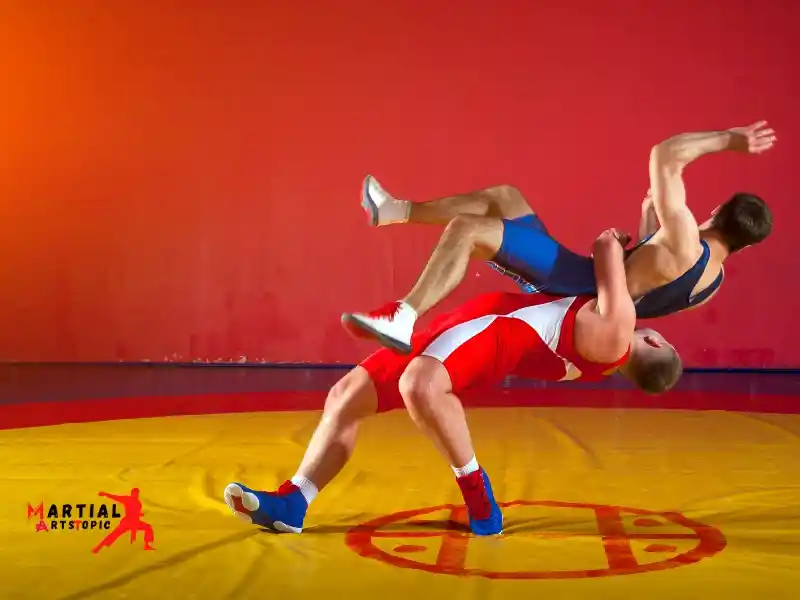
History of Folkstyle Wrestling
The history of Folkstyle Wrestling is rich and fascinating, with deep roots in ancient combat sports and a significant impact on modern wrestling. From its origins to the key historical figures and events that shaped it, Folkstyle Wrestling has an interesting story to tell.
Origins and Evolution of Folkstyle Wrestling
Folkstyle Wrestling, sometimes known as collegiate wrestling in the United States, has its origins in the ancient combat sports practiced by various cultures around the world. It developed from traditional forms of wrestling that were used in warfare and hand-to-hand combat. Over time, Folkstyle Wrestling developed its own distinct rules and techniques, setting it apart from other forms of wrestling.
Key Historical Figures and Events
Throughout its history, key historical figures and events has influenced Folkstyle Wrestling. One such figure is Benjamin Franklin, who was a proponent of wrestling and helped to popularize the sport in the United States. Additionally, the establishment of wrestling clubs and organizations, as well as the introduction of wrestling competitions in schools and universities, played a crucial role in the development of Folkstyle Wrestling.
Impact of Folkstyle Wrestling on Modern Wrestling
Folkstyle Wrestling has had a significant impact on modern wrestling, shaping the techniques, rules, and competitive spirit of the sport. Other forms of wrestling have adopted and adapted many of the techniques and strategies used in Folkstyle Wrestling, influencing the evolution of the sport. The emphasis on both takedowns and mat wrestling in Folkstyle Wrestling has also contributed to the development of well-rounded wrestlers who excel in both standing and ground positions.
Basic Techniques: Types of Wrestling
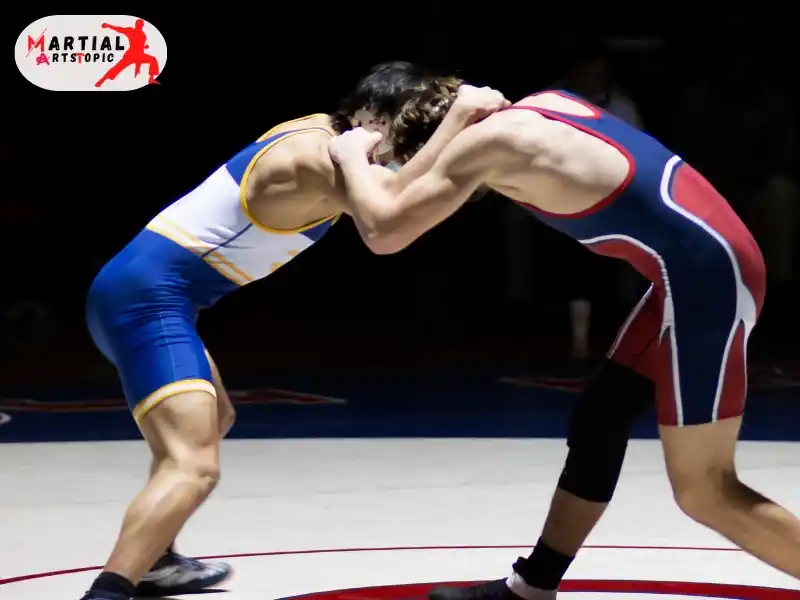
Wrestling is a combat sport that requires a firm foundation in basic techniques. Whether you are a beginner or an experienced wrestler, mastering the fundamental moves is essential to excel in the sport. In this blog post, we will delve into the basic techniques of wrestling, including stance and footwork, takedowns, escapes and reversals, as well as riding and control.
Stance and Footwork
Having a solid stance and mastering footwork is crucial in wrestling. Your stance provides the foundation for your movements and balance, while footwork allows you to maneuver effectively during a match. By maintaining a low, balanced stance and practicing agile footwork, wrestlers can improve their ability to engage and react to their opponents.
Takedowns
Takedowns are integral to wrestling and involve techniques to bring your opponent to the mat from a standing position. Whether it’s a single leg takedown, double leg takedown, or a variety of other techniques, mastering takedowns requires strength, speed, and precision. Wrestlers must also focus on timing and leverage to execute successful takedowns against their opponents.
Escapes and Reversals
In wrestling, being able to escape from a disadvantageous position or execute a reversal is essential for turning the tide of a match. Wrestlers learn various techniques to break free from their opponent’s control and gain the upper hand. These techniques require skill, flexibility, and quick thinking to outmaneuver the opponent and change the course of the match.
Riding and Control
Riding and control techniques are crucial for maintaining dominance over an opponent once we have executed a takedown. Wrestlers use these techniques to keep their opponents on the mat and prevent them from escaping or reversing the situation. This requires a combination of strength, balance, and strategic positioning to effectively control the opponent and dictate the flow of the match.
Advanced Moves
Besides mastering the fundamental techniques of wrestling, advanced wrestlers must also learn a variety of sophisticated moves to gain an edge over their opponents. These advanced moves require a combination of skill, timing, and strategic thinking. Here are some examples of advanced wrestling moves.
Tilts and Turns
Tilts and turns are techniques used to expose an opponent’s back to the mat, scoring valuable points in a match. Wrestlers can execute tilt and turn maneuvers from various positions, using leverage and body control to secure a dominant position and attempt to pin their opponent.
Pinning Combinations
Pinning combinations involve chaining together a series of moves to immobilize an opponent and earn a pinfall victory. Skilled wrestlers can transition seamlessly between different pinning combinations, keeping their opponents off-balance and capitalizing on openings to secure a winning pin.
Counter-Offensive Techniques
Counter-offensive techniques enable wrestlers to defend against their opponent’s attacks and quickly turn the tables in their favor. Effective counter-offensive moves require anticipation, reflexes, and the ability to capitalize on an opponent’s mistakes, allowing wrestlers to reverse their opponent’s momentum and gain a competitive advantage.
Training and Conditioning
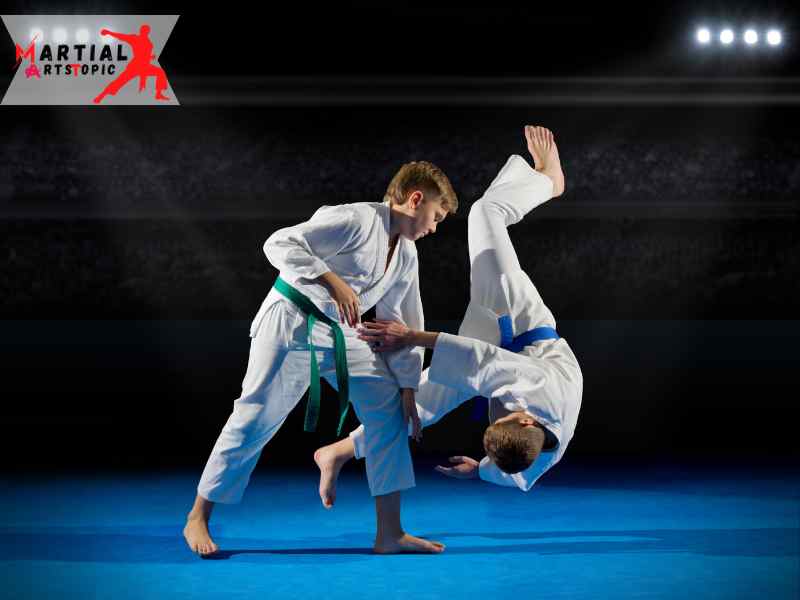
Training and Conditioning wrestling is a physically demanding sport that requires a combination of strength, endurance, flexibility, and mental toughness. In order to excel in wrestling, athletes must undergo rigorous training and conditioning to develop the necessary skills and physical attributes. Here are some key components of training and conditioning for wrestlers.
Strength and Endurance Exercises
Strength and endurance are essential for wrestlers to overpower and outlast their opponents. Strength training exercises such as squats, deadlifts, bench presses, and pull-ups help wrestlers build muscle and increase their power. Endurance exercises such as running, cycling, and interval training improve cardiovascular fitness, allowing wrestlers to maintain their energy levels throughout a match.
Flexibility Drills
Wrestlers need to have a high level of flexibility to perform various grappling techniques and maneuvers. Flexibility drills, such as dynamic stretching, yoga, and mobility exercises, help wrestlers improve their range of motion, prevent injuries, and enhance their agility on the mat.
Mental Preparation
Wrestling is not just a physical battle, but also a mental one. Mental preparation techniques, such as visualization, meditation, and goal-setting can help wrestlers stay focused, confident, and resilient during training and competition. Developing mental toughness is crucial for overcoming adversity and staying composed under pressure.
Folkstyle Strategy
Folkstyle Strategy: The Art of Wrestling is a sport that demands strength, skill, and strategy. Among the various styles of wrestling, something widely practiced Folkstyle wrestling in the United States, particularly at the collegiate and high school levels. In this blog post, we will delve into the essential aspects of Folkstyle wrestling strategy, including the scoring system and rules, match tactics and game plan, and weight management. Let’s explore how wrestlers can harness these elements to achieve success on the mat.
Scoring System and Rules
Understanding the scoring system and rules of Folkstyle wrestling is crucial for any aspiring wrestler. In Folkstyle wrestling, points are awarded for various actions such as takedowns, escapes, reversals, near falls, and riding time. A takedown, for example, is worth two points, while a near fall can earn a wrestler two or three points depending on the duration. Additionally, wrestlers must be mindful of the out-of-bounds rules and the criteria for pinning an opponent.
Match Tactics and Game Plan
Crafting a solid game plan and employing effective match tactics is key to outmaneuvering opponents on the wrestling mat. Wrestlers must strategize based on their strengths and weaknesses, as well as those of their opponents. This may involve studying an opponent’s previous matches, identifying their tendencies, and devising counter-strategies. Moreover, maintaining a firm stance, executing precise takedowns, and capitalizing on scoring opportunities are essential tactics for success in Folkstyle wrestling.
Weight Management
In the realm of wrestling, weight management plays a pivotal role in a wrestler’s performance. Wrestlers often compete in specific weight classes, and managing one’s weight to meet these requirements is a fundamental aspect of the sport. This may involve adhering to a structured diet and exercise regimen to achieve the desired weight, while also ensuring that the wrestler maintains peak physical condition and strength.
Injury Prevention and First Aid
Injury Prevention and First Aid for Folkstyle Wrestling. Folkstyle wrestling is a physically demanding sport that requires strength, agility, and skill. With the intense physicality involved, injuries are a common occurrence. It is essential for wrestlers to be aware of the common injuries in folkstyle wrestling, as well as the preventive measures and first aid techniques to address them. In this blog post, we will delve into the common injuries in folkstyle wrestling and provide valuable information on injury prevention and first aid.
Common Injuries in Folkstyle Wrestling and How to Prevent Them
- Sprains and Strains: Sprains and strains are among the most common injuries in folkstyle wrestling. These injuries can occur when wrestlers make sudden movements or twists during a match. To prevent sprains and strains, wrestlers should focus on proper warm-up and stretching exercises before practice or competition. Additionally, maintaining good conditioning and strength training can help reduce the risk of these injuries.
- Contusions and Bruises: Contusions and bruises are also prevalent in folkstyle wrestling, often resulting from impact with the mat or opponents. Wrestlers can prevent contusions and bruises by wearing appropriate protective gear, such as headgear and knee pads. Proper technique and body positioning during takedowns and falls can also minimize the risk of contusions and bruises.
- Shoulder and Knee Injuries: Shoulder and knee injuries, including dislocations and ligament sprains, are common in folkstyle wrestling because of the dynamic nature of the sport. Wrestlers can reduce the likelihood of shoulder and knee injuries by focusing on strengthening the muscles surrounding these joints. Technique refinement and maintaining proper body mechanics during wrestling maneuvers can also help prevent these injuries.
First Aid Techniques for Minor Injuries
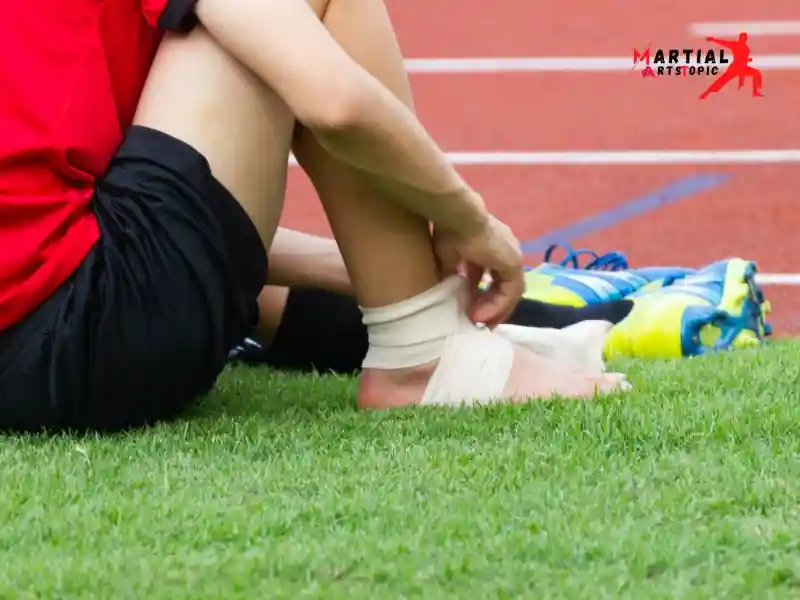
In the event of minor injuries during folkstyle wrestling, it is crucial to apply appropriate first aid techniques to promote healing and alleviate discomfort. Here are some first aid measures for common minor injuries:
- Sprains and Strains: R.I.C.E. (Rest, Ice, Compression, Elevation) is a standard first aid approach for sprains and strains. Wrestlers should rest the injured area, apply ice to reduce swelling, use compression bandages for support, and elevate the injured limb to minimize inflammation.
- Contusions and Bruises: For contusions and bruises, applying cold compresses to the affected area can help reduce pain and swelling. Wrestlers should also consider taking over-the-counter pain relievers, such as ibuprofen, to manage discomfort.
- Abrasions and Cuts: Clean any abrasions or cuts with mild soap and water, and apply an antiseptic ointment to prevent infection. Cover the wound with a sterile bandage or dressing to promote healing.
When to Seek Professional Medical Help
While they can often manage minor injuries with first aid techniques, there are instances where professional medical help is necessary. Wrestlers should seek medical attention if they experience the following:
- Severe pain that persists despite initial first aid measures
- Inability to bear weight on a limb or move a joint
- Visible deformity or instability of a joint
- Signs of infection, such as increased redness, swelling, or drainage from a wound
Competing in Folkstyle Wrestling
Competing in Folkstyle Wrestling. Are you ready to step onto the wrestling mat and compete in the thrilling world of folkstyle wrestling? Whether you’re a seasoned wrestler or just getting started, competing in folkstyle wrestling tournaments requires preparation, strategic analysis of opponents, and a commitment to fair play and ethical behavior. In this blog post, we’ll explore the essential aspects of competing in folkstyle wrestling, from preparing for a tournament to analyzing opponents and maintaining fair play throughout the competition.
Preparing for a Wrestling Tournament
Preparing for a wrestling tournament requires a combination of physical conditioning, mental preparation, and strategic planning. Wrestlers should focus on maintaining their conditioning, practicing specific techniques, and visualizing success in the upcoming tournament. Proper nutrition and hydration leading up to the tournament are also crucial for peak performance.
Strategies for Analyzing Opponents and Adjusting Game Plans
In the heat of competition, being able to analyze opponents and adjust game plans is essential for success in folkstyle wrestling. Wrestlers should be prepared to adapt their tactics based on their opponent’s strengths and weaknesses, as well as the flow of the match. This may involve changing techniques, altering pacing, or capitalizing on openings as they arise.
Fair play and Ethical Considerations in Competition
Besides physical and tactical preparation, wrestlers should always prioritize fair play and ethical considerations in competition. This includes showing respect for opponents, coaches, and officials, as well as adhering to the rules and regulations of the sport. Good fair play not only reflects positively on the individual wrestler but also contributes to the overall integrity of the sport.
Did You Enjoy This Piece? Check out Other Wrestling Moves
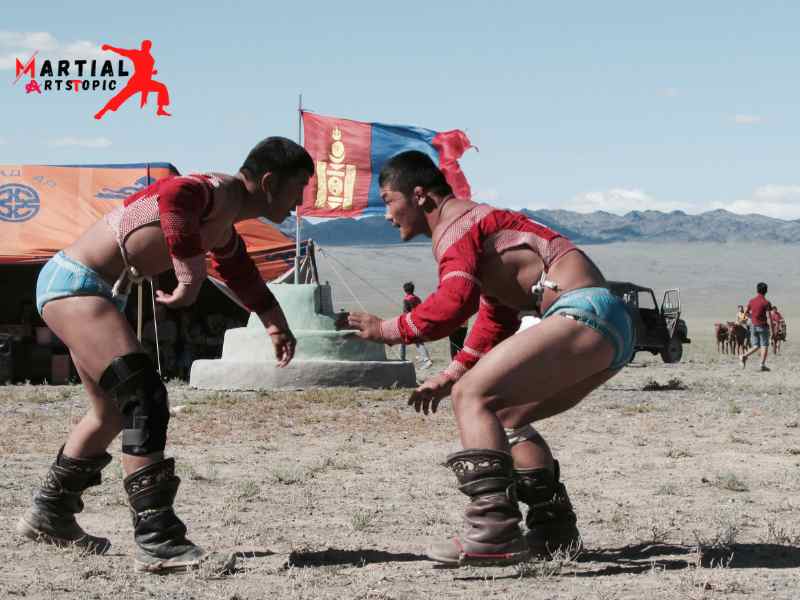
- Luchador Wrestling: Originating from Mexico, luchador wrestling is characterized by its high-flying maneuvers, colorful masks, and flamboyant characters. Luchadors are known for their agility and showmanship, making this style of wrestling a must-see for fans of aerial stunts and dramatic storytelling in the ring.
- Midget Wrestling: Also known as “little person wrestling,” this style features wrestlers of shorter stature who showcase their athleticism and skill in the ring. Midget wrestling events often deliver an entertaining mix of comedy and athleticism, making it a unique and enjoyable experience for audiences.
- GFS Wrestling Move: The GFS (Ground Fighting System) wrestling move emphasizes ground-based grappling and submission techniques. This style focuses on controlling an opponent on the mat and using leverage and technique to secure a victory, making it a favorite among fans of technical and strategic wrestling.
- Kinshasha Wrestling Move: Named after the city of Kinshasa in the Democratic Republic of the Congo, this wrestling move involves a devastating knee strike to the head of an opponent. Popularized by professional wrestlers like Shinsuke Nakamura, the Kinshasha is a visually stunning and impactful maneuver that always leaves audiences in awe.
- Lariat Wrestling Move: Known for its sheer power and force, the lariat is a clothesline maneuver that involves a wrestler using their arm to forcefully strike their opponent’s neck or chest. This move is a staple in many wrestling styles and is often used to deliver dramatic and impactful moments in a match.
- Wrestling Choke Holds: Choke holds are an essential part of grappling and submission wrestling, where a wrestler uses their arms or legs to apply pressure to an opponent’s neck, restricting airflow and causing them to submit. While controversial, choke holds are a fundamental aspect of many wrestling disciplines and require skill and precision to execute effectively.
- Wrestling Chokes: Similar to choke holds, wrestling chokes are maneuvers designed to exert control over an opponent by applying pressure to their neck. These moves require precision and skill, and when executed properly, can quickly turn the tide of a wrestling match.
- Women’s Wrestling Leg Holds: Women’s wrestling leg holds encompass a variety of techniques focused on immobilizing opponents using the legs. These moves require flexibility and dexterity, and female wrestlers have mastered the art of using their legs to gain a competitive edge in the ring.
- UFO Wrestling Move: The UFO wrestling move, short for Unidentified Flying Object, is a high-flying acrobatic maneuver that sees wrestlers launching themselves off the ropes or turnbuckles to deliver a breathtaking aerial attack. This move never fails to captivate audiences with its gravity-defying spectacle.
- Power Drive Wrestling Move: The power drive wrestling move is a demonstration of raw strength and force, as wrestlers use explosive power to lift and slam their opponents to the mat. This move showcases the physical prowess of the wrestlers and often leads to dramatic moments in the ring.
- Brain Buster Wrestling Move: The brain buster wrestling move is a devastating suplex variation that involves lifting an opponent upside down and driving their head and upper body into the mat. This high-impact move is a crowd-pleaser, showcasing the intensity and physicality of professional wrestling.
- Judo Throws for Wrestling: Judo throws are versatile techniques that have been adapted for use in wrestling, offering wrestlers a wide range of takedown options. These throws require precise timing and balance, and wrestlers who primary judo techniques gain a strategic advantage in the ring.
- Leg Wrestling Moves: Leg wrestling moves encompass a diverse array of techniques focused on targeting opponents’ legs for takedowns and submissions. These moves require strategic positioning and leverage, as wrestlers seek to gain control and dominance using their lower body.
- The Wrestling Leg Ride: The wrestling leg ride is a technique that involves a wrestler using their legs to gain control of an opponent’s body, often leading to a dominant position on the mat. This move showcases the importance of lower body strength and agility in wrestling.
- Leg Drop Wrestling: The leg drop wrestling move is a striking maneuver that sees a wrestler leaping into the air and driving their leg down onto an opponent’s body. This impactful move is a crowd favorite, often culminating in dramatic moments during wrestling matches.
Conclusion
Folkstyle Wrestling is a dynamic and challenging sport that requires strength, technique, and mental toughness. With its rich history and emphasis on both individual and team performance, Folkstyle Wrestling continues to be a popular and respected form of athletic competition. Its combination of physical prowess and strategic thinking makes it an interesting and rewarding pursuit for athletes of all ages and abilities.
